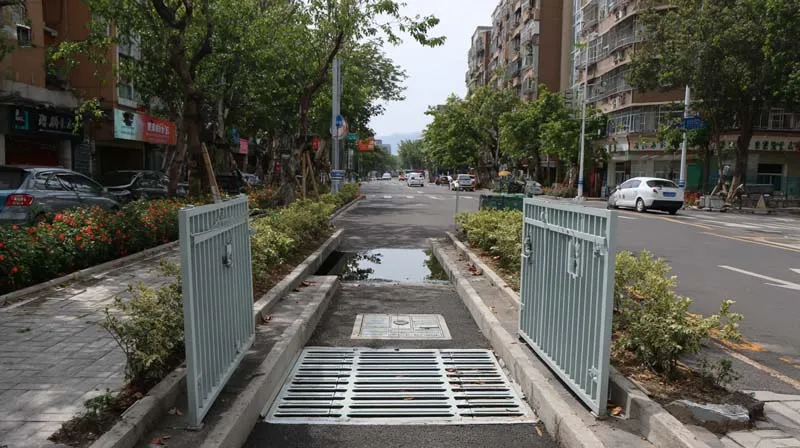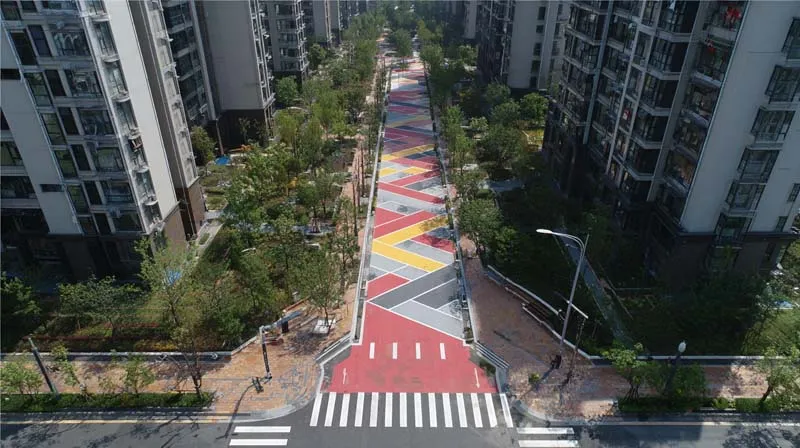In the wave of smart city construction, the IoT intelligent manhole cover has emerged as an innovative urban management technology that is quietly transforming how cities operate. During flood seasons, traditional manhole covers often struggle to cope with sudden heavy rain and waterlogging. Manual inspections and dispatching not only consume significant time and manpower but also increase the safety risks for urban roads and residents.
Today, powered by IoT technology, intelligent manhole covers have achieved a leap from passive defense to proactive response, enabling cities to demonstrate unprecedented resilience in the face of storms.
IoT Intelligent Manhole Cover: A New Tool for Flood Prevention
The IoT intelligent manhole cover is equipped with 4G RTUs (Remote Terminal Units) to achieve real-time monitoring and automatic control of cover status. By integrating multiple sensors, the system dynamically detects surrounding water levels, pressure data, and operational conditions. When water accumulation is detected during flood season, it automatically sends a signal and completes the lifting or lowering operation of the manhole cover.
This intelligent flood prevention solution has reduced the average manual response time from two hours to just 15 minutes, buying valuable time for emergency responses.
This transformation is more than just an improvement in efficiency; it represents a shift in management philosophy—from “post-incident handling” to “preemptive warning,” from “manual inspections” to “system coordination,” making urban management smarter, more proactive, and more efficient.

Technology Empowerment: How 4G RTUs Transform Manhole Cover Management
The adoption of 4G RTUs is key to realizing the potential of IoT intelligent manhole covers. Acting as the communication hub, the 4G RTU quickly transmits sensor data collected at the front end to the cloud management platform, enabling real-time monitoring and command execution.
Key technical features include:
1.High-speed communication with low latency: Leveraging 4G networks, manhole data is uploaded to the management platform within seconds, ensuring commands are delivered rapidly and response times are shortened.
2.Multi-parameter monitoring: Real-time sensing of water levels, cover status, and environmental pressure provides ample data for accurate system judgment.
3.Automated control: Intelligent algorithms allow the system to autonomously control the lifting and lowering of covers when necessary, minimizing flood risks.
4.Open platform integration: Seamless connection with city flood prevention, traffic management, and emergency systems enables cross-departmental collaboration.
This deep technological integration has transformed manhole cover management from a “blind spot” into a fully visible and controllable network, making it an essential component of a smart city’s flood prevention system.
From 1,000 Units to More: A Digital Transformation Sample for Cities
One city has taken the lead by deploying 1,000 manhole covers with IoT control systems, forming a comprehensive management network that integrates points, lines, and areas. Practice has proven that this system performs exceptionally well in extreme weather conditions:
Significant response time improvement: Automatic lifting and lowering reduced response times from two hours to just 15 minutes, greatly easing road waterlogging pressures.
Inspection efficiency optimization: Real-time data allows remote monitoring to replace manual inspections, reducing the need for personnel in hazardous environments.
Risk mitigation: Proactive alerts and automated scheduling effectively prevent displacement and collapse accidents, ensuring pedestrian and vehicle safety.
This is not only a successful case for one city but also a replicable model for digital flood management nationwide and globally.
The Deeper Value of Smart Cities: Beyond Flood Control
The significance of IoT intelligent manhole covers goes beyond flood management. They represent “micro-innovations” in smart city construction—addressing small but critical issues in urban management through intelligent upgrades, thereby driving overall governance improvements.
In the future, this system could be expanded to:
Public safety collaboration: Seamless integration with urban video surveillance, traffic control, and emergency response platforms to achieve cross-department coordination.
Big data analytics: Using accumulated operational and meteorological data for flood prevention forecasting and risk assessments, creating proactive defense systems.
5G and AI upgrades: Leveraging 5G’s high bandwidth and AI’s deep learning capabilities to enable faster responses and more accurate predictions, ushering in a “Smart Flood Management 2.0 era.”
All these advances mark the inevitable progression of smart cities from “digitalization” to “intelligentization.”

Conclusion: Technology and Responsibility Moving Together for a Safer, Resilient City
The core of a smart city is technology serving the people. IoT intelligent manhole covers are not merely an upgrade to flood management—they are a transformation of urban governance. They empower public safety with technology and drive city decisions with data, providing residents with safer mobility and living environments.
On the road to urban digitalization, the power of technology cannot move forward without the continuous exploration of industry pioneers. As a high-tech enterprise deeply engaged in the IoT field for over 20 years, EELINK Communication has been committed to integrating wireless communication technology with innovative applications, creating efficient and reliable IoT hardware and software solutions. Its business covers asset management, cold-chain logistics, vehicle theft prevention, and more.
With exceptional R&D strength and extensive industry experience, EELINK Communication provides comprehensive intelligent services for customers worldwide. It firmly believes that only through continuous innovation can the vision of a fully connected world become a reality.
